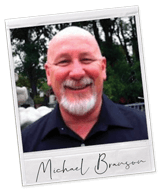
Parker's #1 Reverse Mortgage

 |
ARLO™REVERSE MORTGAGE
ASSISTANT |
 |
Michael G. Branson, CEO of All Reverse Mortgage, Inc., and moderator of ARLO™, has 45 years of experience in the mortgage banking industry. He has devoted the past 20 years to reverse mortgages exclusively. (License: NMLS# 14040) |
 |
All Reverse Mortgage's editing process includes rigorous fact-checking led by industry experts to ensure all content is accurate and current. This article has been reviewed, edited, and fact-checked by Cliff Auerswald, President and co-creator of ARLO™. (License: NMLS# 14041) |
Parker Reverse Mortgage Lenders
At All Reverse Mortgage, Inc. (ARLO™), we’re honored to be recognized by the Better Business Bureau as Colorado’s top-rated reverse mortgage lender. We proudly hold a perfect 5.0-star rating and an A+ exemplary rating. With 20 years of experience, we’re dedicated to serving the needs of homeowners across 15 states, including right here in beautiful Colorado.
Since our founding in November 2004, we’ve focused exclusively on one thing: reverse mortgages. We believe in offering only the best, which is why we’re committed to providing you with the lowest rates and most competitive prices available.
As a HUD-approved direct lender, we offer the national HECM programs along with specialized non-FHA and jumbo reverse mortgages. This means we can help Colorado homeowners with high-value properties that exceed the national 2025 lending limit of $1,249,125.
We encourage you to compare our reviews, lower rates, and closing costs with those of any other major lender. The difference speaks for itself, and we’re excited to show you how we can help you maximize your home’s equity.
We are fully licensed by the Colorado Department of Regulatory Agencies (DORA), ensuring that you receive top-tier service and support from a trusted local partner. (License/Registration #100032569)
Parker Reverse Mortgage Facts
| City | Homeowners Age 62+ | Reverse Mortgages Closed Last 12 Months | Purchase Reverse Mortgages Closed Last 12 Months | Lenders in Parker (est) | Avg. Home Value |
|---|---|---|---|---|---|
| Parker | 1,089 | 9 | 1 | 6 | $734,692 |
HUD-Approved Direct Lender
At All Reverse Mortgage, Inc. (ARLO™), we’re proud to be approved by the Department of Housing and Urban Development (HUD) to offer the HUD Home Equity Conversion Mortgage, also known as HECM or “Heck-um.” This reverse mortgage loan is designed specifically for seniors like you who want to make the most of their home’s equity.
Local Expertise in Parker
We’re here in Parker to help homeowners who want to refinance their current mortgage or access their home’s equity. Whether you’re looking to pay off an existing loan and eliminate monthly mortgage payments, use your equity for other needs, or a combination of both, we’re here to guide you through the process with care and expertise.
About All Reverse Mortgage, Inc.
Our team has extensive experience in the reverse mortgage industry. We were part of the team that introduced the first fixed-rate jumbo reverse mortgage in 2008, giving us the expertise needed to serve homeowners with higher-value properties. We’re always exploring new products to serve our clients better, especially those whose home values exceed the limits of the HUD HECM program.
Expert Guidance You Can Trust
Choosing the right reverse mortgage option can be a big decision, but our seasoned professionals are here to help. We’ll walk you through the benefits and potential drawbacks of both HUD HECM and jumbo reverse mortgage programs so you can make an informed choice that best fits your needs.
For many homeowners aged 62 and above, a reverse mortgage has become a valuable financial tool—not just a last resort. Whether it’s eliminating monthly mortgage payments or setting up a line of credit that grows over time, this program can help you live comfortably in your home and plan for the future with confidence.
Parker Lending Limits
Parker, Colorado, located just 20 miles southeast of Denver, is a fast-growing town in Douglas County, known for its family-friendly atmosphere and stunning landscapes. As of 2024, Parker has a population of over 64,200, making it an appealing destination for retirees and homeowners looking to settle in a vibrant yet serene environment.
Approximately 5% of Parker’s population is 65 years or older, with 79% of these seniors owning their homes, equating to over 1,000 senior households who may benefit from a reverse mortgage. This financial tool can help senior homeowners access their home’s equity without the burden of monthly mortgage payments, providing financial flexibility during retirement.
As of January 2024, the median home value in Parker is $734,692, reflecting steady growth in the real estate market. With home prices rising by 10.5% over the past year, some properties may exceed the federal reverse mortgage lending limit of $1,249,125. For homeowners with properties valued above this threshold, jumbo reverse mortgage programs are available, allowing them to access even more of their home’s equity.
Ready to Unlock Your Home’s Equity?
As Parker’s #1 Rated Reverse Mortgage Lender, All Reverse Mortgage, Inc. (ARLO™) is here to provide trusted guidance, real-time rates, and expert support to help you make informed decisions.
✔ No obligations. Just real-time rates and expert advice.
✔ Instant quote. No personal info required.
✔ Licensed experts. Get clear, honest answers.
As a fully licensed lender by the Colorado Department of Regulatory Agencies (DORA) (License #100032729), we’re committed to helping you secure the retirement you deserve.
Get Your Free Quote from Parker’s #1 Rated Reverse Mortgage Lender! Use our reverse mortgage calculator, or call (303) 536-8890 to speak with a friendly expert today.
 Michael G. Branson
Michael G. Branson Cliff Auerswald
Cliff Auerswald
